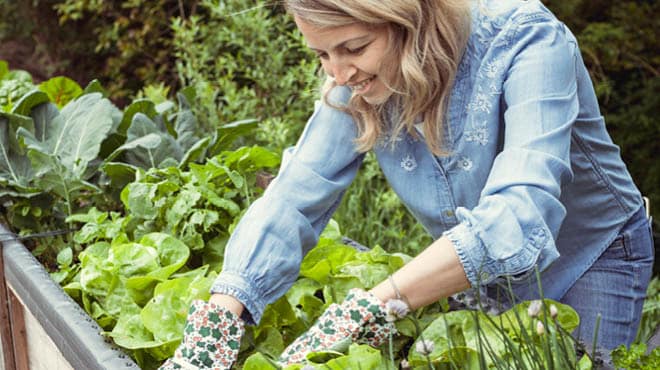Lasting Gardening Practices for an Eco-Friendly Yard
Lasting Gardening Practices for an Eco-Friendly Yard
Blog Article
The Comprehensive Guide to Gardening: Discover the Advantages of Various Designs and Techniques
Horticulture encompasses a varied selection of styles and strategies, each offering distinct benefits tailored to individual preferences and environmental contexts. From the structured elegance of official yards to the natural beauty of permaculture, understanding these variations is crucial for growing a room that not just flourishes but also reflects personal worths and aesthetics. Sustainable practices play an essential role in boosting regional ecological communities and ensuring lasting success. As we check out these different styles, it ends up being obvious that the choices made can significantly affect both the yard's health and its payment to the surrounding environment.
Comprehending Gardening Basics
Recognizing the essentials of horticulture is important for growing a flourishing and lasting yard. An effective horticulture undertaking begins with a strong foundation of understanding regarding soil, plant choice, and environment considerations.
Choosing the right plants is equally crucial. Understanding their details demands-- such as sunlight, water, and spacing-- guarantees compatibility with the neighborhood environment and soil conditions. This choice process ought to also take into consideration the development practices and lifecycle of plants, enabling a well balanced and cosmetically pleasing garden.
Additionally, effective watering methods are important. Over-watering and under-watering can both lead to plant stress and condition. Applying a timetable based upon seasonal changes and plant needs can enhance water efficiency.
Popular Horticulture Styles
What specifies the significance of preferred horticulture styles? These styles encapsulate varied aesthetic concepts, practical needs, and environmental considerations, eventually showing the garden enthusiast's individual vision. Among the most distinguished styles is the cottage garden, defined by its casual layout and a lively variety of flowers and veggies. This method emphasizes a harmonious blend of shade and structure, creating a welcoming atmosphere.
On the other hand, the official yard embodies balance and order, frequently featuring geometric patterns and meticulously trimmed bushes. This style communicates elegance and sophistication, with carefully selected plants that enhance a structured visual.
The Japanese garden offers a calm and introspective experience, utilizing natural environments like water, rocks, and plants to produce a tranquil atmosphere. It concentrates on simplicity and balance, encouraging consideration.
Additionally, xeriscaping has obtained appeal, specifically in dry regions (Gardening). It focuses on drought-resistant plants and efficient water use, advertising sustainability while enhancing landscape beauty
Benefits of Container Horticulture
Container gardening offers a plethora of benefits that make it an enticing choice for both novice and skilled garden enthusiasts alike. Among the main benefits is versatility; containers can be put in numerous areas, allowing garden enthusiasts to maximize sunshine exposure and create visually enticing arrangements. This versatility makes it feasible to yard precede where traditional in-ground horticulture might not be feasible, such as balconies, outdoor patios, or urban atmospheres.
In addition, container horticulture gives far better control over dirt conditions. Gardeners can customize the soil mix to match details plants, making sure optimum drain and nutrient accessibility. This is particularly useful for people staying in locations with bad or contaminated dirt.
Another substantial benefit is the lowered risk of insects and conditions. Container plants can be checked much more conveniently, and any issues can be addressed without delay. This approach can decrease the spread of invasive types.
Sustainable Horticulture Practices
Lasting horticulture practices are essential for advertising ecological wellness and enhancing biodiversity in our ecological communities. These techniques prioritize ecological equilibrium, resource conservation, and making use of organic techniques to minimize unfavorable ecological impacts. By utilizing techniques such as composting, gardeners can lower waste while enriching soil health and wellness, thereby promoting a growing garden environment.
Water preservation is one more critical element of lasting horticulture. Strategies such as rainwater harvesting, drip irrigation, and using drought-resistant plants can dramatically reduce water usage while guaranteeing that More Help plants get sufficient moisture. Integrating native plant species into garden styles supports local wild animals and lowers the demand for chemical plant foods and chemicals, which can be hazardous to the environment.

Inevitably, sustainable gardening techniques not just add to much healthier yards however additionally advertise a more resistant environment, using lasting advantages to both the gardener and the surrounding area.
Tips for Successful Gardening
To cultivate a successful yard, garden enthusiasts need to focus on mindful planning and thoughtful execution of their gardening strategies. Begin by examining the regional environment and dirt problems, as these elements significantly affect plant choice and development. Pick plants that are fit to your atmosphere, taking into consideration indigenous varieties that will certainly love marginal intervention.
Executing a well-structured design is vital (Gardening). Make use of buddy growing methods to advertise biodiversity and all-natural insect control, while making certain each plant has appropriate area for growth. This not just boosts aesthetics but additionally enhances you can find out more general plant health and wellness
Regular upkeep is vital to an effective yard. Develop a constant routine for watering, weeding, and fertilizing. Mulching can help retain moisture and reduce weeds, while additionally including raw material to the dirt.
Don't take too lightly the importance of monitoring. Routinely keeping an eye on plant health and development will allow for prompt treatments. Ultimately, be open to discovering and adapting; horticulture is a continuous procedure that takes advantage of experience and experimentation. By prioritizing careful preparation, execution, and recurring maintenance, garden enthusiasts can achieve a vivid and efficient yard that thrives throughout the seasons.
Final Thought


In summary, the exploration of varied horticulture styles and strategies discloses their diverse benefits, adding to both visual charm and ecological wellness. Container horticulture Continue uses flexibility and accessibility, while lasting practices boost environmental stewardship. By integrating numerous methods and approaches, garden enthusiasts can enhance their initiatives, promote biodiversity, and produce functional outdoor rooms. Eventually, this extensive guide functions as a valuable source for cultivating successful horticulture experiences, promoting a deeper connection with nature and the bordering environment.
Report this page